Mexican Spanish is lively, funny, and full of unique slang. It differs from the formal Spanish you learn in class and reflects Mexico’s culture, history, and humor. Slang is like an inside joke that helps you bond with locals.
Grammar and core words are still Spanish, but the amount and flexibility of slang in Mexico stand out. People use it for greetings, emotions, jokes, and even arguments. Much of it comes from indigenous languages, history, and a sharp sense of humor.
How Is Mexican Spanish Different from Other Spanish Dialects?
In formal situations, Mexican Spanish sounds similar to other varieties like Spanish from Spain or other parts of Latin America. But in casual speech, the differences are clear. Every region has its own slang. For example, a jacket is usually chaqueta, but in Mexico you say chamarra to avoid a rude double meaning.
Mexico also uses special interjections and regional words. ¿Qué onda? (What’s up?) is very Mexican. Indigenous languages, especially Nahuatl, add unique terms too. The tone and rhythm can change by region, giving Mexican Spanish its own sound. This shows how language changes with the people who speak it.
Why Does Slang Play a Major Role in Mexican Speech?
Slang matters for a few reasons. First, it lets people express feelings and shades of meaning that formal language often can’t. A word like chingar can show anger, praise, surprise, and more, depending on how it’s used. Second, slang helps people feel like part of a group. Using it says “I’m one of you.”
Also, Mexican culture values humor and quick wit, and slang fits that style. It helps with teasing, sarcasm, and vivid descriptions. In the past, slang could be a quiet protest or a code for certain groups. Today, it keeps changing and mirrors modern life in Mexico.

Why Is Mexican Slang Important to Everyday Life?
Mexican slang isn’t just casual words; it’s a key part of daily talk. If you want to really connect with people, understanding slang helps a lot. It closes cultural gaps and makes conversations deeper and more natural.
Without it, you might catch the basic meaning but miss the tone, emotions, or social context. Think about a group of friends chatting or bargaining in a market. If you only use textbook Spanish, it will feel stiff. Slang makes conversations flow.
How Does Slang Reflect Mexican Culture and Identity?
Slang reflects Mexico’s values, humor, and history. Words like chingar carry strong cultural weight, touching on ideas of struggle and pride. Many words relate to family (jefe for dad or boss) or food, often used as nicknames or playful expressions.
Mexicans often play with language: using diminutives to show affection or exaggeration for emphasis. Slang also shows regional identities, from fast-talking chilangos in Mexico City to the slower pace up north. Each term is like a small cultural clue to how people think and live.
When Should You Use Slang (and When Not To)?
Knowing when to use slang matters as much as the words themselves. Use it in informal settings with friends or peers. ¿Qué onda, wey? sounds friendly with a buddy. But don’t use it with your boss, a police officer, or an elder you just met.
Better to skip slang in formal situations, business meetings, or with people in authority. Some slang is vulgar and can offend. If you’re unsure, choose formal speech. Watch how locals speak, and add slang slowly as you learn more. The goal is to connect, not upset anyone.
Regional Slang Differences Within Mexico
Mexico is large and diverse, and slang changes by region. What’s normal in Mexico City might be unknown in Baja California, and the other way around. These differences make the language richer and more fun to learn.
Knowing regional slang helps travelers and learners avoid confusion and build rapport with people in each area. This shows how language keeps changing with local habits and history.
Words Unique to Mexico City (Chilango)
People from Mexico City are called chilangos. Their speech is fast and full of special phrases. The city used to be called D.F. (pronounced “deh-EFF-ei”), though the official name is now CDMX.
They use words like neta (truth/for real) in a particular way and often shorten words. ¿Qué onda? might sound different just by intonation. Even chingar shows up in many forms. To feel at home in the capital, get used to the chilango style.
Border, Northern, and Southern Mexico Slang
Outside the capital, slang shifts a lot. In the north, especially near the U.S. border, English influences the language. You may hear vato instead of wey for “dude” (though vato can sound rough). Paisa (from paisano) often means a fellow Mexican, common in Baja California.
In the south, strong indigenous roots bring local words into Spanish. Northern slang can sound more blunt; southern slang can be more poetic. Some northerners say el centro instead of zócalo for the main plaza. These differences show the country’s variety and make learning slang an ongoing project.
Common Greetings and Expressions in Mexican Spanish Slang
Beyond “Hola” and “Buenos días,” Mexican Spanish has many informal greetings that set the tone, from friendly to urgent.
Learning these will help you handle everyday chats and catch the mood behind people’s words.
Que onda, Que tal, and ¿Qué pasó?
- ¿Qué onda? One of the most iconic Mexican greetings: “What’s up?” or “How’s it going?” Literally “what wave,” like “what’s the vibe?” It’s common with friends. Example: “¿Qué onda, compa? ¿Vamos al partido?” You’ll also hear “¿Qué tranza?” or the harsher “¿Qué pedo?”.
- ¿Qué tal? Not exclusive to Mexico, but polite and friendly for “How’s it going?” Slightly more formal than ¿Qué onda? Example: “¡Hola, prima! ¿Qué tal estás hoy?”
- ¿Qué pasó? Means “What’s up?” or “What happened?” Used to check in. Example: “¡Hola, amigo! ¿Qué pasó contigo hoy?”
Ahorita, Órale, and Ándale
- Ahorita: A diminutive of ahora (now), but in Mexico it often means “soon,” “in a bit,” or even “later.” “Ahorita lo hago” could mean five minutes, five hours, or never. It reflects a looser sense of time.
- ¡Órale! A flexible shout meaning “Go for it!”, “Right on!”, “Let’s go!”, “Wow!”, or “Geez!” It depends on tone. Example: “¡Órale, vamos a la playa!”
- Ándale: Often “Hurry up!” or “Come on!” It can also mean “Exactly,” surprise, or disappointment, based on tone. Example: “Ándale, no te tardes, vamos a llegar tarde.”
Mande and ¿Neta?
- ¿Mande? A polite way to say “What?” or “Pardon?” in Mexico, often with elders or on the phone. Some say it implies obedience, but today it’s mainly a respectful way to ask for repetition.
- ¿Neta? Means “Really?” or “For real?” Neta can also mean “the truth” or “the best.” Example: “Esta fiesta es la neta.”
¡No manches! and ¡Aguas!
- ¡No manches! Shows surprise or disbelief. It’s a softer version of the vulgar no mames. Means “No way!” or “You’re kidding!” Example: “¡No manches, ganamos el partido!”
- ¡Aguas! Means “Watch out!” or “Careful!” It likely comes from people warning before throwing dirty water out of windows. Example: “¡Aguas con los perros!”
Frequently Used Slang Words in Mexico
Beyond greetings, some core slang appears in most casual chats. Knowing these makes your Spanish sound more natural.
Many are flexible and change meaning with tone and context, which is part of the fun.
Wey / Güey
Wey (also güey) is everywhere, like “dude,” “bro,” or “guy.” It likely comes from buey (ox), once an insult. Today it’s much broader.
People use it to address friends, show surprise or annoyance, or as filler. “¿Qué onda, wey?” is classic. Women use it too, though tone and context matter. Avoid it with strangers or in formal settings.
Chido and Padre
- Chido: Means “cool,” “nice,” or “awesome.” Example: “¡Está bien chido este regalo!” For a person: “Ella es muy chida.”
- Padre: Literally “father,” but slang for “cool” (usually for things or situations). Example: “¡Qué padre está el concierto!” or “Está padrísimo.”
Pedo and its Different Meanings
Pedo means “fart,” but in slang it has many uses:
- Estar/Andar pedo: To be drunk. “Estoy pedo.”
- Ponerse pedo: To get drunk.
- No hay pedo: No problem (more vulgar than no hay bronca).
- Ni pedo: Oh well.
- ¿Qué pedo? “What’s up?” or “What the hell?”
- Buen pedo: Nice, cool (person or situation).
- Mal pedo: Mean, lame, or “that’s too bad.”
- Traer un pedo: To have a problem.
- Hacerla de pedo: To make a fuss or pick a fight.
- Ser otro pedo: To be amazing or one of a kind.
- Bajarle a tu pedo: Chill out.
- Agarrar el pedo: To get it, to understand.
Some people say pex as a softer stand-in: “¿Qué pex?” or “ni pex.”
Chamba and Changarro
- Chamba: Work or a job, often hard or tiring. Example: “Tengo mucha chamba.” The verb is chambear (to work).
- Changarro: A small store or small restaurant. Example: “Ve al changarro ese y ve si tienen dulces.”
Fresa, Naco, and Cholo
- Fresa: “Strawberry,” but slang for a snobby or pretentious person. Can also describe cheesy pop music (música fresona). Example: “Es demasiado fresa.”
- Naco: A rude word for someone seen as low-class or tacky. Similar to “trashy” in English. Example: “Te ves muy naco con eso.”
- Cholo: Often refers to Mexican hip-hop/gang style, common in the U.S. Southwest and northern Mexico.
Chavo, Chava, Morro, Morra
- Chavo / Chava: Informal for “kid,” “boy/girl,” or “guy/gal.” Also used for boyfriend/girlfriend. Example: “Ese chavo es muy amable.”
- Morro / Morra: Similar to chavo/chava, also used for “boyfriend” or “girlfriend.” Diminutives morrito/morrita add affection. Example: “Ya duérmanse, morros.”
Everyday Phrases and Idioms Unique to Mexico
Mexican Spanish has many idioms whose literal meaning is odd, but locals know the figurative meaning right away.
Learning them helps you understand people better and sound more natural.
No hay bronca and No hay pedo
- No hay bronca: “No problem” or “no worries.” Bronca means “fight,” so it’s like saying “there’s no conflict.” Example: “Claro, te presto dinero, no hay bronca.”
- No hay pedo: A rougher version of “no problem.” Common with close friends; use carefully.
A huevo and Simón
- ¡A huevo! Can mean “of course,” “hell yeah,” or “by force.” Often used to celebrate or stress that something will happen. Example: “¡A huevo, ahí te veo!”
- Simón: A slang “yes.” Example: “Simón, yo le digo.” Tone can also make it sound sarcastic: “yeah, right.”
Sale y vale, Cámara, and Ya estás
- Sale y vale: “Alright then” or “OK.” Often said quickly: “saleyvale.” Example: “-Vamos a la fiesta. -Sale y vale.”
- Cámara: Means “I agree” or “deal.” Stronger: conste. Example: “Cámara, nos vemos el lunes.”
- Ya estás: Can mean “that’s enough/stop,” or “you got it/it’s set,” depending on context. Example: “Ya estás, no me hables así.” Or: “Órale, ya estás.”
Arre, Rifársela, and Gacho
- Arre: Like cámara, means “okay” or “alright,” common in the north. Example: “Arre, yo te marco.”
- Rifársela: To do great or be amazing. Example: “Se la rifaron, morros.”
- Gacho: Negative adjective like “awful,” “crappy,” or “ugly.” Can also mean someone is rude or ignorant. Example: “¡Qué gacha eres!”
Slang About People and Social Groups in Mexico
Mexican slang has many labels for people and groups, often direct and funny, sometimes harsh. They reveal a lot about social views and daily life.
Knowing these can help you read social cues and avoid missteps.
Güero/a, Prieto/a, and Güera
- Güero/a: A light-skinned or blonde person. Often a friendly nickname. Example: “Oye, güero, ¿ya terminaste?”
- Prieto/a: Literally “dark.” In Mexico, it can be used casually among friends, but outside Mexico or without context it may sound racist. Use with care.
Chilango, Chicano, and Chairo
- Chilango: Someone from Mexico City. Example: “Los chilangos aman la comida callejera.”
- Chicano: A person of Mexican origin born in the U.S., or someone who moved there young. It reflects a mixed identity.
- Chairo: A negative label for a left-wing “save the world” type, like “social justice warrior.” It’s political and dismissive.
La banda, Compa, and Carnal
- La banda: Literally a band, but slang for your crew or group of friends. Example: “Voy a salir con la banda.”
- Compa: Short for compadre. Means buddy or mate, common among men. Example: “Deja le pregunto a mi compa.”
- Carnal: A very close friend, like a brother. Can also mean your actual brother.
Naco, Fresa, and Popular Stereotypes
As mentioned, naco and fresa are common labels. Naco suggests tacky or low-class. Fresa suggests snobby or stuck-up. Both can be insults and reflect social divisions.
Other labels include ñoños (nerds), metiches (nosy people), mandilones (men bossed around by their partners), and cafres (terrible drivers). Mexicans can be blunt, using nicknames like gordito (chubby) or flaco (thin), which might sound rude elsewhere.
Slang for Parties, Drinking, and Fun
Mexico loves gatherings with music, food, and drinks, so there’s lots of party slang.
These words help you accept invites, talk about drinking, and describe the morning after.

Chela, Caguama, and Pomo
- Chela / Cheve: Beer. Example: “Dame dos chelas para mí y mi compadre.”
- Caguama: A large returnable beer bottle (about 40 oz). Also the name of a sea turtle.
- Pomo: A bottle of liquor, like tequila or vodka. Example: “No alcanzan las chelas, hay que abrir un pomo.”
Pistear and Peda
- Pistear: To drink alcohol or get drunk (vulgar). The noun pisto means booze. Example: “Caéle, estamos pisteando.” Another verb is chupar.
- Peda: A drinking party or binge. Example: “¿Se va a armar la peda?” or “Vámonos de peda.”
Crudo, Mala copa, and Chiste
- Crudo: Hungover. Example: “Estoy crudo.” or “Tengo cruda.”
- Mala copa: A bad drunk who gets aggressive, fights, or cries. Example: “Vigila a tu amigo, se pone malacopa.”
- Chiste: Mainly “joke,” but also “the trick” or “the way to do it.” Example: “El chiste es hacerlo así.”
Mexican Slang for Insults, Swearing, and Vulgar Language
Mexican Spanish has many strong insults and swear words. They are common in casual speech, but can offend. Know their weight and setting before using them.
You need to understand context and tone so you don’t cause problems or misunderstandings.
Chingar, Cabrón, and Pendejo
- Chingar: A very flexible vulgar verb, similar to the English f-word in range:
- Positive: “¡Está chingón!” (It’s awesome!)
- Negative: “Está de la chingada.” (It’s messed up.)
- Quantity: “Hay un chingo de tráfico.” (There’s a ton of traffic.)
- Aggression: “¡Chinga tu madre!” or “¡Vete a la chingada!”
- Mistake: “Lo chingué.” (I messed it up.)
Octavio Paz wrote about this word in “The Labyrinth of Solitude.”
- Cabrón: Vulgar, but sometimes used jokingly among men. As an insult, it means “bastard” or “son of a bitch.” It can also mean “hard” or “tough” in some phrases: “Está cabrón.”
- Pendejo: A strong insult meaning “idiot,” “stupid,” or “asshole.” Avoid in most situations. Example: “No seas pendejo.”
Pinche and No mames
- Pinche: Works like “fucking” in English to intensify. Example: “¡Pinche tráfico!” or “Eres un pinche idiota.”
- ¡No mames! A vulgar way to say “No way!” or “You’ve got to be kidding me!” It’s the stronger version of no manches. Avoid in polite settings.
Albur and Double Meanings
Albur is a dirty pun or double meaning, often sexual. It’s a verbal game that needs quick thinking and deep cultural knowledge. It’s hard for learners because it relies on subtle wordplay and context.
Many slang terms have double meanings: the literal one is harmless, but the implied one is sexual or rude. That’s why context and tone matter a lot in Mexican conversations.
Puto, Madre, and Vulgar Variations
- Puto: A very offensive homophobic slur. Do not use it.
- Madre: “Mother” is sacred in Mexico, which makes these phrases very strong. Common expressions:
- “¡Me vale madres!” (I don’t give a damn!)
- “¡Ni madres!” (No way!)
- “A toda madre.” (Awesome/feeling great.)
- “¡Qué poca madre!” (How messed up!)
- “Desmadre.” (A total mess.)
- “¡Partir la madre!” (To beat someone up.)
- “Hasta la madre.” (Fed up.)
Popular Mexican Slang Phrases: Quick Reference
Here’s a short list of common slang and meanings to help you get started.
Context and tone can change meanings a lot, so listen closely.
Spanish to English Slang Dictionary (Selected Terms)
- Aguanta: Wait, hold on, no way.
- Ahorita: Soon, later (often not “right now”).
- Albur: Dirty pun, double meaning.
- Ando bien pedo: I’m very drunk.
- Arre: Okay, alright.
- Cabrón: Bastard (insult), tough guy, hard (situation), buddy (among men).
- Cagarla / Cagó: To mess up.
- Cámara: Deal, I agree.
- Carnal: Brother, very close friend.
- Chafa: Cheap, low quality.
- Chale: Darn, bummer.
- Chamba: Job, work.
- Changarro: Small shop.
- Chela / Cheve: Beer.
- Chido: Cool, awesome.
- Chilango: Person from Mexico City.
- Chicano: Mexican-American.
- Chingar: Very flexible vulgar verb.
- Chiste: Joke; the trick or way to do something.
- Cochino: Dirty, gross, pig (figurative).
- Codo: Stingy.
- Compa: Buddy, mate.
- Crudo: Hungover.
- Culo: Butt (vulgar).
- Culero: Mean person, jerk.
- Depa: Apartment.
- Desmadre: A mess.
- El mal del puerco: Food coma.
- Ese: Man, dude (addressing a friend).
- Está cañón: It’s hard, tough.
- Fresa: Snobby, stuck-up.
- Gacho: Awful, crappy, ugly, rude.
- Gandalla: Selfish, opportunistic.
- Güey / Wey: Dude, bro, or “silly/dumb” in some contexts.
- Güero/a: Light-skinned, blonde.
- Híjole: Jeez, gosh.
- Huevo: Egg; balls; courage.
- Jalada: Over the top, ridiculous.
- Jefe/Jefa: Boss; dad/mom (informal respectful).
- La banda: The crew.
- Madre: Mother (used in many strong phrases).
- Malacopa: Bad drunk.
- Mande?: What? Pardon? (polite).
- Mamar: To give a blowjob; to suckle.
- Mamón/Mamona: Picky, stuck-up person.
- Metiche: Nosy person.
- Mijo/Mija: My son/daughter (affectionate; also for friends).
- Morro/Morra: Kid; boyfriend/girlfriend.
- Naco: Tacky, low-class.
- Neta: The truth; for real; “really?”; the best.
- Ni modo: Oh well.
- ¡No manches!: No way! You’re kidding!
- ¡No mames!: No way! Bullshit! (vulgar).
- Órale: Go for it! Right on! Okay! Hurry up!
- Padre: Cool (things/situations).
- Peda: Drinking party, binge.
- Pedo: Fart; drunk; problem (many uses).
- Pinche: Fucking (intensifier).
- Pistear: To drink alcohol.
- Pomo: Bottle of liquor.
- Prieto/a: Dark-skinned person (use with care).
- Puta madre: Damn it! (very strong).
- ¿Qué onda?: What’s up?
- ¿Qué pedo?: What’s up? (vulgar); What the hell?
- Ratero: Thief.
- Refresco: Soda; can also mean a bribe (with police).
- Rifársela: To do great.
- Sale: Okay, sounds good.
- Simón: Yes (slang).
- Tocayo: Someone with your same name.
- Vato: Man, guy (northern; can sound rough).
- Vocho: Volkswagen Beetle.
- Ya estás: That’s enough; stop; okay (agreement).
Advice for Learning and Using Mexican Slang
Starting to learn Mexican slang is exciting and brings you closer to real fluency. But slang depends on context, so move carefully and listen a lot. Respect the culture and you’ll do well.
Language changes all the time. What’s trendy today may sound old tomorrow. Keep listening and keep learning.
Should You Use Slang as a Spanish Learner?
Yes, but use it wisely. Adding slang helps you sound natural and connect with locals. It shows effort and helps you join casual banter and jokes.
Still, start slow and watch how people use it. Many terms are vulgar and can offend if used wrong. Think of it like seasoning: a little makes things better; too much ruins the dish. Begin with safer words and then expand as you gain confidence.
Tips for Avoiding Offense or Misunderstandings
To avoid trouble when using slang, keep these in mind:
- Listen and Observe: Notice who says what, in which situations, and with what tone.
- Start Mild: Begin with safe words like chido or ¿Qué onda?
- Context Matters: What’s fine with friends may not be okay with your boss or elders.
- Be Careful with Vulgar Words: Terms like pedo, chingar, or phrases with madre are strong. Avoid puto entirely.
- Don’t Overdo It: Too much slang can sound fake or rude.
- Ask Kindly: If you don’t understand a word, ask a trusted native speaker.
- Accept Mistakes: You’ll make some. Say sorry, learn, and move on. Most people will appreciate your effort.
Best Resources for Studying Mexican Slang
Use a mix of tools to learn:
- Immersion: Time in Mexico, listening and talking with locals, is best.
- Music: Rock, hip-hop, and regional music use lots of slang. Try Café Tacvba and Molotov. Look up lyrics.
- Film and TV: Mexican shows and movies place slang in real settings. “Narcos: Mexico” helps with context, but remember its specific subculture.
- Books and Blogs: Guides like “Mexislang” or “Quick Guide to Mexican Slang,” and blogs such as “No Hay Bronca,” explain terms with examples.
- Language Exchange: Practice with native speakers for instant feedback.
- Online Dictionaries and Forums: Look up terms and usage notes as you go.







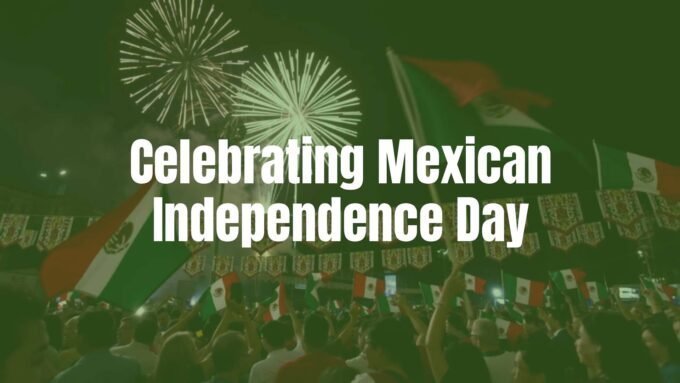
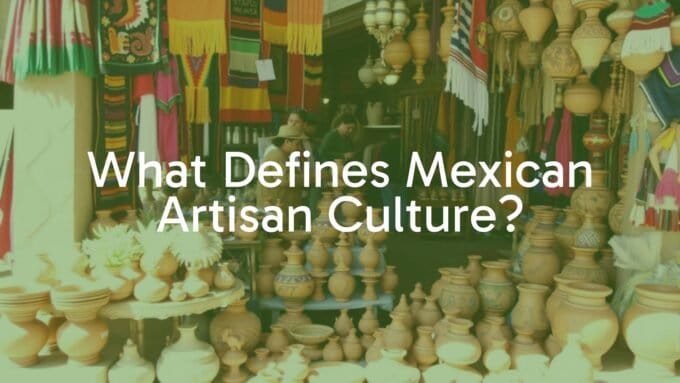
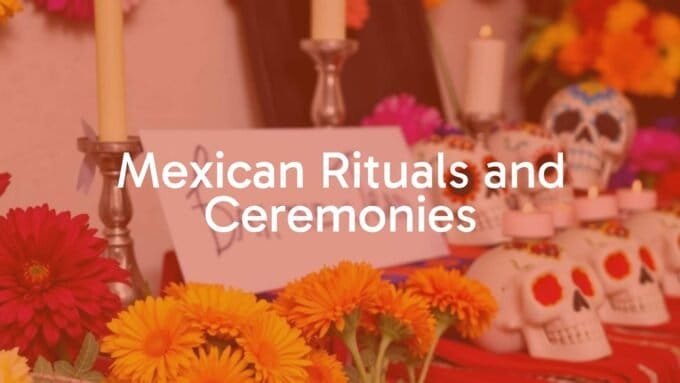

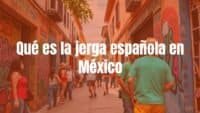
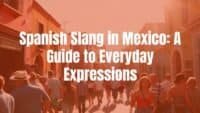
Leave a comment